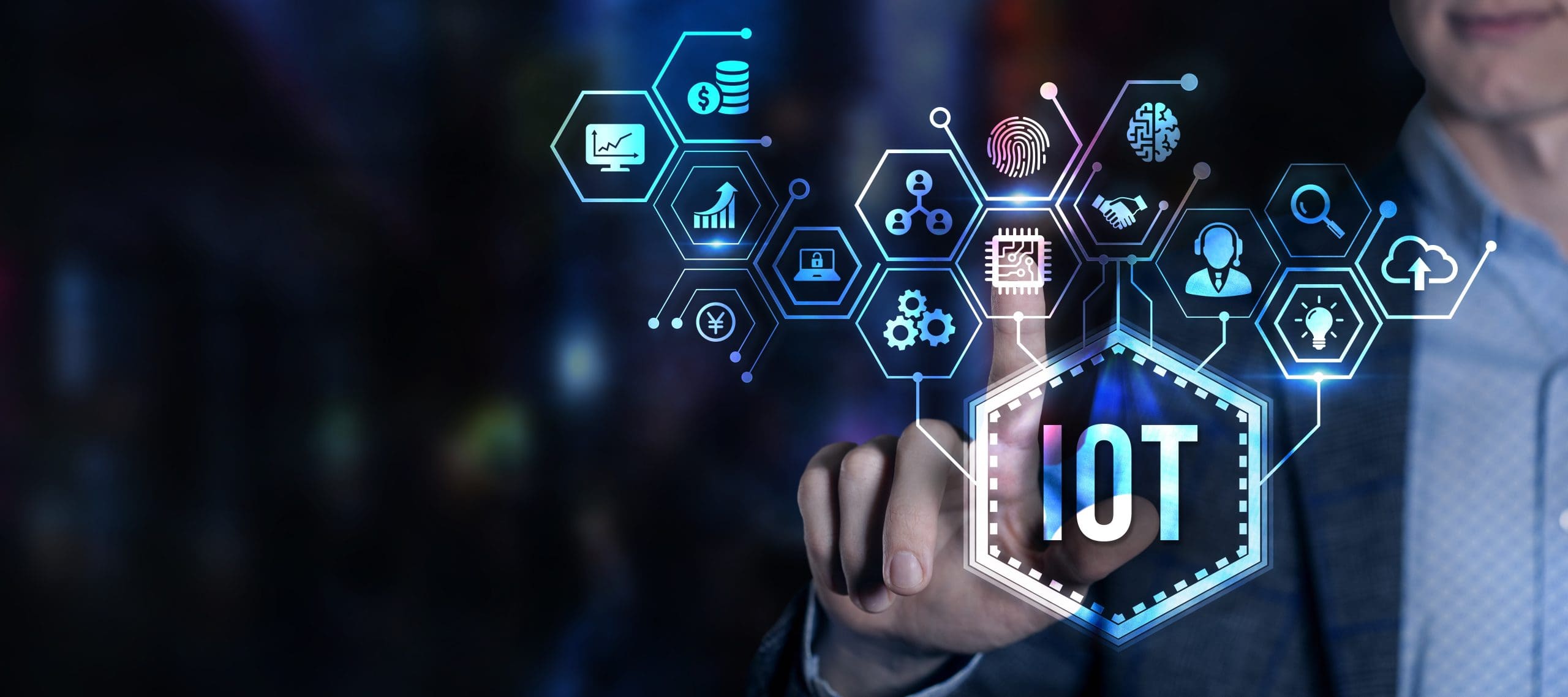
How does IoT work?
The potential of the Internet of Things (IoT) is vast due to the ability for productive and informative connections between countless devices. IoT facilitates devices to exchange data with each other and with the cloud. IoT devices are typically embedded with technology such as sensors and software and can include mechanical and digital machines and consumer objects. Devices use these sensors to collect, send, and act on data they acquire from their environments.
With IoT, data is transferable over a network without requiring human-to-human or human-to-computer interactions. This allows numerous industries to operate more efficiently, deliver enhanced customer service, improve decision-making, and increase the value of the business.
IoT can also use artificial intelligence and machine learning to aid in making data collection processes easier and more dynamic. Let’s find out more about this emerging technology.
Why do we need IoT?
The Internet of Things helps people live and work smarter. Take, for example, the benefits provided to consumers by IoT-embedded devices such as cars, smartwatches, and thermostats. For example, when a person arrives home, their car could communicate with the garage to open the door, their thermostat could adjust to a preset temperature, and their lighting could be set to a lower intensity and colour.
What are the benefits of IoT to organisations?
In addition to offering smart devices to automate homes, IoT is essential to business. It provides organisations with a real-time look into how their systems really work, delivering insights into everything from the performance of machines to supply chain and logistics operations.
IoT enables machines to complete tedious tasks without human intervention. Companies can automate processes, reduce labour costs, cut down on waste, and improve service delivery. IoT helps make it less expensive to manufacture and deliver goods and offers transparency into customer transactions.
IoT is one of the most important technologies and it continues to advance as more businesses realise the potential of connected devices to keep them competitive.
Common benefits for businesses include the following:
- Monitors overall business processes
- Improves the customer experience
- Saves time and money
- Enhances employee productivity
- Provides integration and adaptable business models
- Enables better business decisions
- Generates more revenue
IoT encourages companies to rethink how they approach their businesses and gives them the tools to improve their business strategies.

The Internet of Things in logistics
IoT touches every industry, including healthcare, finance, retail, and manufacturing. Generally, IoT is most abundant in manufacturing, utility organisations, and logistics providers that use sensors and other IoT devices.
The Internet of Things will be revolutionary in transport management and its benefits are significant.
Benefit one – location and route management
Trucks are the lifeline of any logistics company. In the US alone, more than 70% of all the goods are transported by trucks. Logistics and fleet companies hence require systems that can help them manage their truck operations.
IoT facilitates location and route management for supply chain management. Transport managers can monitor the location of their fleet in real-time using GPS tracking systems and geofencing techniques. When Operators become aware of events such as road accidents and weather events that may affect on-time delivery, the Operations team are able to directly communicate with their fleet, boosting oversight, communication, and customer satisfaction. This helps transport operators better track drivers and trucks, and the overall planning and management of delivery schedules.
Benefit two – inventory tracking and warehousing
IoT provides enhanced transparency of storage of goods and management of stock levels. Tags and sensors allow companies to easily track the status and position of their inventory, preventing losses, ensuring safe storage of goods, and faster location of items. It also allows transport operators to be proactive in reducing manual handling errors and labour costs.
Benefit three – breakdown prevention
By using IoT applications, transport operators can address maintenance issues sooner, saving them time and money. Sensors measure and analyse parameters of the performance of trucks, predicting patterns linked to common truck breakdowns. They can also make real-time alerts about probable malfunctions that can be prevented. Prevention of breakdowns and malfunctions helps companies improve their inspection and repair practices, reduces downtime, and improves delivery outcomes.
Benefit four – IoT and blockchain for digital BOL
Applications of IoT in the logistics industry when blended with the technology of Blockchain create a digital Bill of Lading (BOL) that creates whole new transparency in the supply chains. This BOL allows a company and its customers to trace the transportation cycle of the products being shipped.
Some benefits of this pairing include improved goods monitoring (temperature, humidity, location, and other parameters), reduced risk of data theft and cyber-attack, and increased transparency of the supply chain.
Benefit five – autonomous and self-driving vehicles
We have previously discussed the progress of automated trucks in Australia and the momentum of this technology is only set to increase. Self-driving vehicles promise increased safety for drivers and their cargo. Data corresponding to various shipment parameters can be analysed and processed by IoT to develop smart driving routes and directions. Transport operators will be able to reduce their operation costs, minimise car accidents, and ensure timely cargo delivery based on traffic conditions.
How will the Internet of Things shape logistics in the future?
Logistics is one of the sectors that has the most to gain from the Internet of Things. It has changed the logistics sector with its advanced telemetry capacities, surveillance solutions and improved decision making. As consumer demand and expectations increase, IoT can help transport providers keep pace with changes while optimising costs. By using the integrated solutions of IoT, you can develop and use data to create powerful insights, further supporting their business goals. The global IoT network is thriving, and logistics operators can future-proof their organisations by embracing these new technologies to enhance their transport management and distribution systems.
To discuss how your transport operations can make the most of emerging digital management technology, get in touch with the GoDesta team here or explore our range of solutions here.
GoDesta: Growing Transport Faster, Smarter
